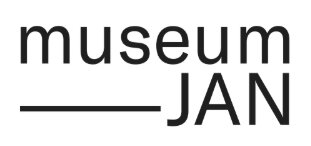Jantien Jongsma, Levensboom, 2008
Museum JAN shows an overview of the work of Jantien Jongsma (1965). As graduate of the Gerrit Rietveld Academy, she became a master of storytelling using various techniques on paper. Her colourful work features a combination of embroidery patterns, painting techniques and pencilwork, in which the focus is on the cycle of life.
Jongsma's anecdotal oeuvre reads like a diary in sketchbook form. Her main focus is on the stages of life, with her own personal life being the starting point. In her creative process, she makes use of the language of forms derived from folk art and handicrafts, traditionally made mostly by women. Samplers - embroidery works made to test someone's skills – are a source of inspiration. Jongsma uses motifs from these works to visualise the themes of a woman's life. The patterns of old embroidery works in her opinion represent a summary of life, featuring traditional daily scenes from birth to death, as well as family trees and the seasons. The themes used in folk art concern everyone. Jongsma: ‘In the end, we all live by an embroidery pattern.’
Jongsma grew up surrounded by arts and crafts. Her mother was interested in handicrafts, folk art and naive painting and collected samplers. Inspired by the structure with decorative edges in various embroidery stitches, Jongsma begins to display stories in the graphic cross-stitch style. Characters in historical costume figure alongside contemporary elements. In her work, Jongsma mixes her own experiences and childhood memories with location-based cultural history. This leads to an imaginative whole, often situated in places where Jongsma has lived or that have left an impression on her.
Tree of Life
The exhibition Tree of Life includes Jongsma's work from the past 15 years. Her monumental work The Tree of Life(2008) is the earliest of her works that is constructed like a tapestry, without perspective or depth. From the edges, the cycle of human life is depicted in circular form, intertwined with personal scenes. The delicate, graphic cross-stitch drawings are in contrast with the strong and expressive painting of the tree of life.
The drawing Amsterdam (2012) clearly shows the influence of topographic maps. Following the example of medieval maps showing the earth schematically with place names and inscribed events such as battles, Jongsma has started her own series. She fills maps of Dutch places like Harlingen, Franeker, Sint Jacobi Parochie, Dokkum and Amsterdam with illustrated stories from her own life. Some of these are featured in the exhibition.
She believes that nature is an essential precondition for a harmonious society in which a city also needs light, air and space. That is the reason why nature has become an increasingly prominent subject in her work.
Her most recent work incorporates scenes from the theatrical and dance world featuring characters in playful costumes. Playing children and dancing adults in an urban landscape are surrounded by greenery and architecture. Jongsma imagines all human movements to be one big choreography.

